Idea by
Ozan Ertug
Call for ideas 2017
The Autonomous Whale
The Autonomous Whale

Let's say in 20 years we will be introduced to some super textiles that has every electronics printed on them. And we might have some cutting-edge drones that has long-lasting batteries and complex working habits. And by that time 3d printing big structures would be a normal day thing. And you should expect some capable AI systems that starts to operate in everywhere. Combine all those technologies on an airship and you have a flying construction system that needs so little help from ground units and people.
Airship use solar panels to charge the drones and operate the 3d printer. While the 3d Printer works on producing the big mass, drones do the small staff like connecting, welding, screwing etc. And when the drones are out of juice they can connect to the airship and charge themselves. When the airship needs to move or change its shape, the drones used for these purposes. And this system can be used for cleaner demolishing processes too.

the concept behind the idea:
- circuits printed on textiles
- automated drones
- interchangeable operations unit (3d printer)
- a zeppelin
Thanks to new advancements now we can print anything on textiles. It actually invented by some fashion designer. If some part of the circuits or anything damaged drones will fix it! These qualities give Zeppelins shape-shifting Power!
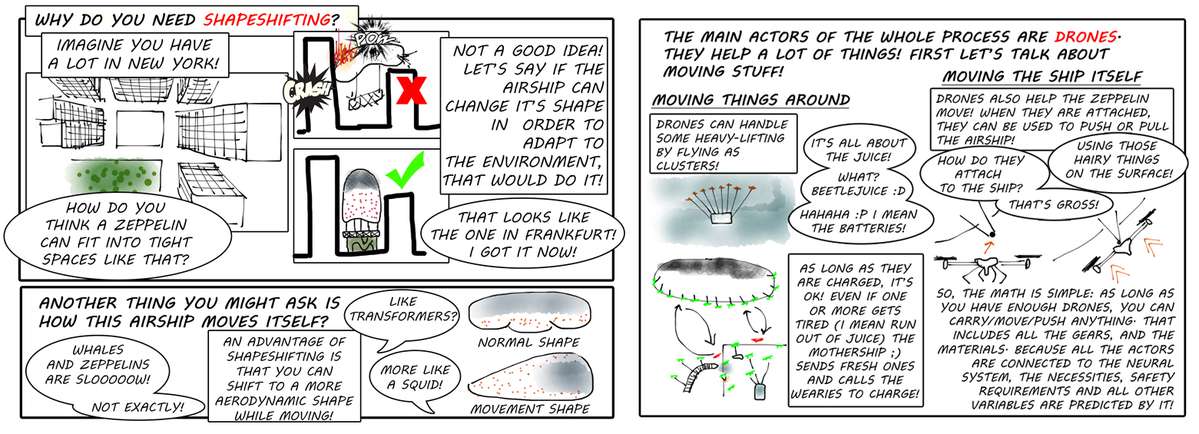
Why do you need shapeshifting?
Imagine you have a lot in a city crowded by skyscrapers. How do you think an airship fit into tight spaces. If it can change it's shape in order to adapt to the environment, that would solve the problem.
Another question is how the ship moves itself. It transforms into a squid like shape. Than the drones are used as propellers. Drones can work on site, do some little stuff but when they get together they can do lots of things.

Another advantage of having lots of drones is that you can actually construct the building with them! This would be a revolution in safety standards, the people who were working on construction now works as software engineers! While the drones work on those kind of small scale construction deeds, the hard pieces get together by a big 3d printer.
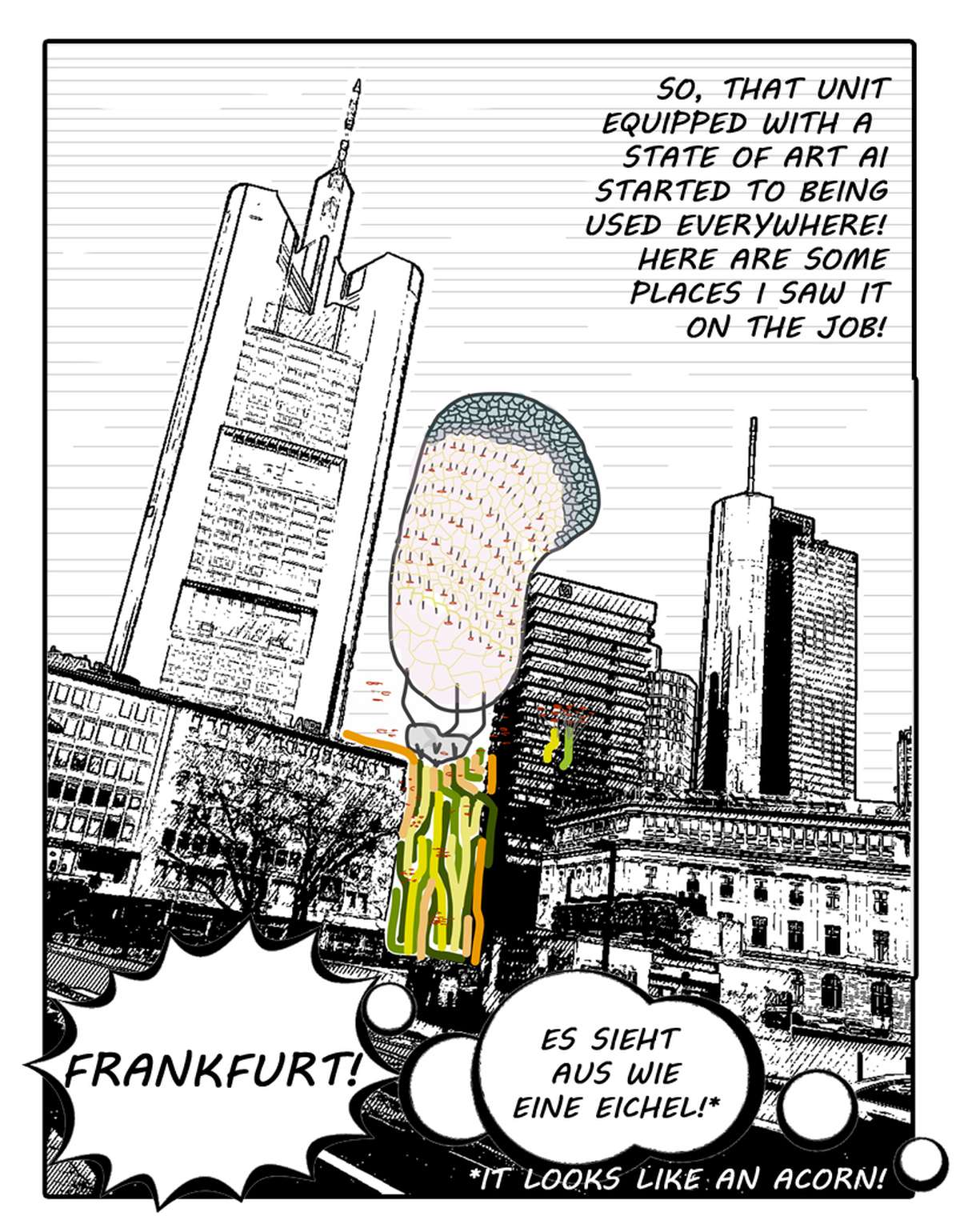
So, that unit equipped with a State of art AI Started to being used everywhere! Here are some places I saw it on the job! In Frankfurt we have a zeppelin that looks like an acorn according to locals!
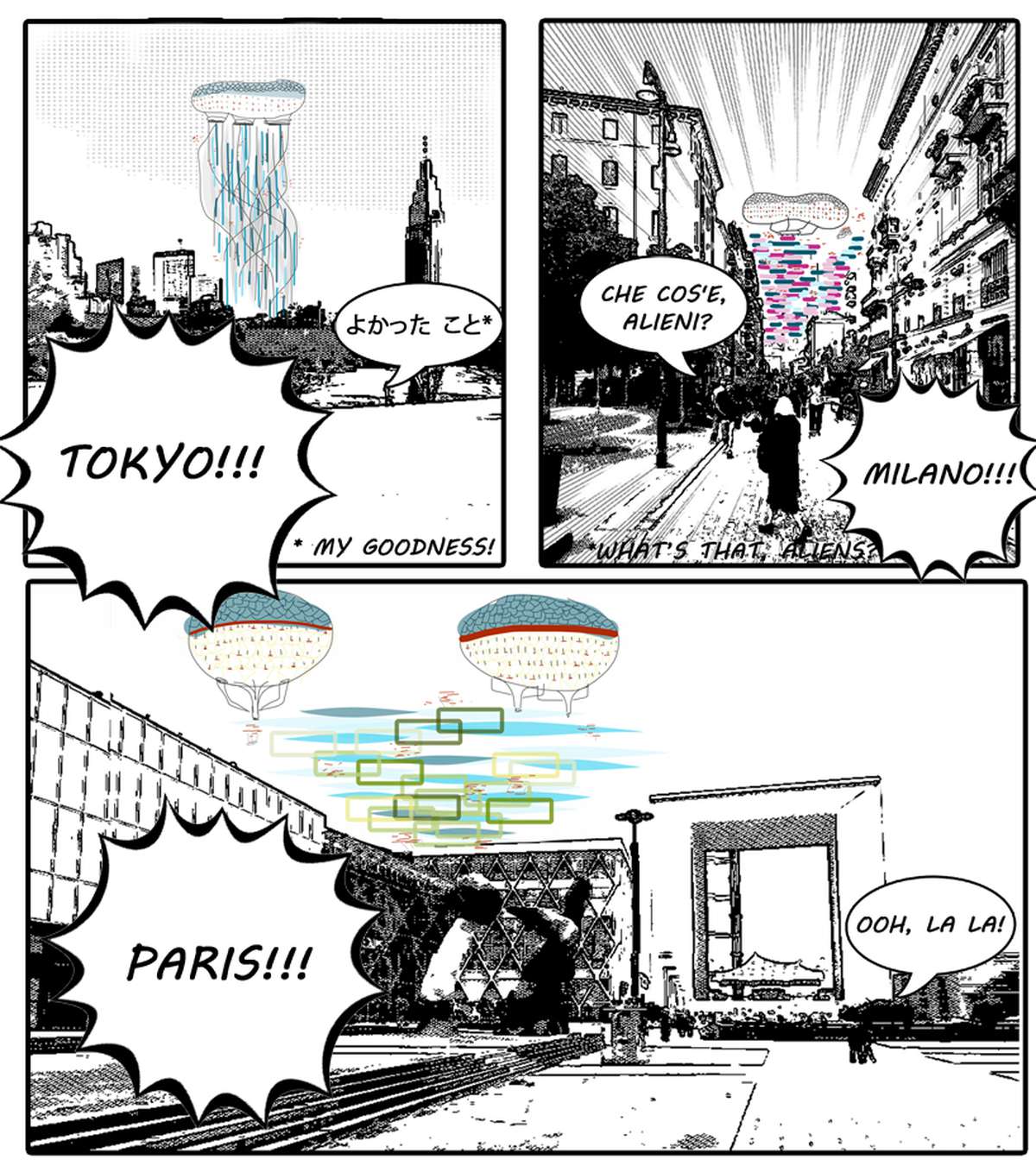
In tokyo, paris and milan people kinda liked and afraid those ariships at the sam time.
The Autonomous Whale
The Autonomous Whale

Let's say in 20 years we will be introduced to some super textiles that has every electronics printed on them. And we might have some cutting-edge drones that has long-lasting batteries and complex working habits. And by that time 3d printing big structures would be a normal day thing. And you should expect some capable AI systems that starts to operate in everywhere. Combine all those technologies on an airship and you have a flying construction system that needs so little help from ground units and people.
Airship use solar panels to charge the drones and operate the 3d printer. While the 3d Printer works on producing the big mass, drones do the small staff like connecting, welding, screwing etc. And when the drones are out of juice they can connect to the airship and charge themselves. When the airship needs to move or change its shape, the drones used for these purposes. And this system can be used for cleaner demolishing processes too.

the concept behind the idea:
- circuits printed on textiles
- automated drones
- interchangeable operations unit (3d printer)
- a zeppelin
Thanks to new advancements now we can print anything on textiles. It actually invented by some fashion designer. If some part of the circuits or anything damaged drones will fix it! These qualities give Zeppelins shape-shifting Power!
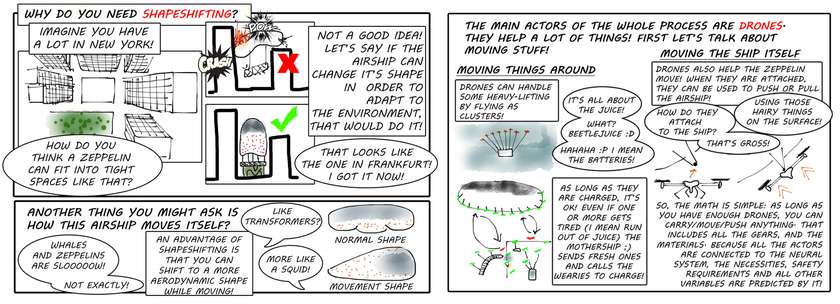
Why do you need shapeshifting?
Imagine you have a lot in a city crowded by skyscrapers. How do you think an airship fit into tight spaces. If it can change it's shape in order to adapt to the environment, that would solve the problem.
Another question is how the ship moves itself. It transforms into a squid like shape. Than the drones are used as propellers. Drones can work on site, do some little stuff but when they get together they can do lots of things.

Another advantage of having lots of drones is that you can actually construct the building with them! This would be a revolution in safety standards, the people who were working on construction now works as software engineers! While the drones work on those kind of small scale construction deeds, the hard pieces get together by a big 3d printer.
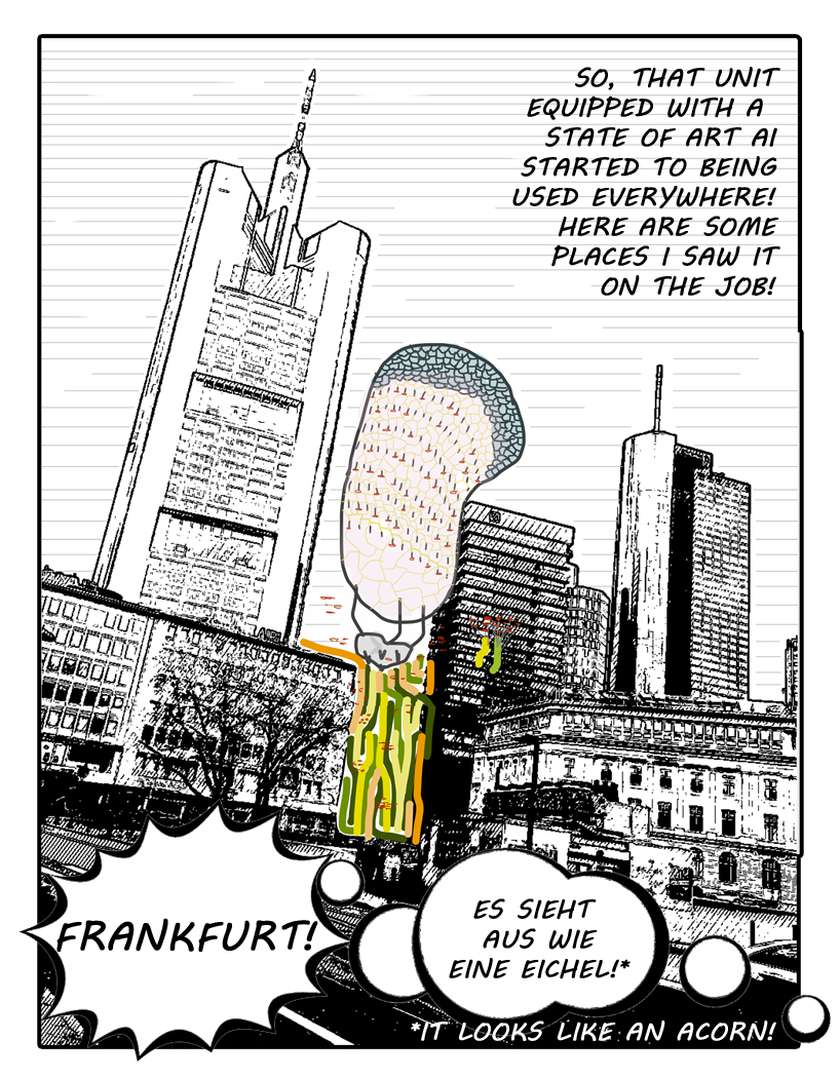
So, that unit equipped with a State of art AI Started to being used everywhere! Here are some places I saw it on the job! In Frankfurt we have a zeppelin that looks like an acorn according to locals!

In tokyo, paris and milan people kinda liked and afraid those ariships at the sam time.